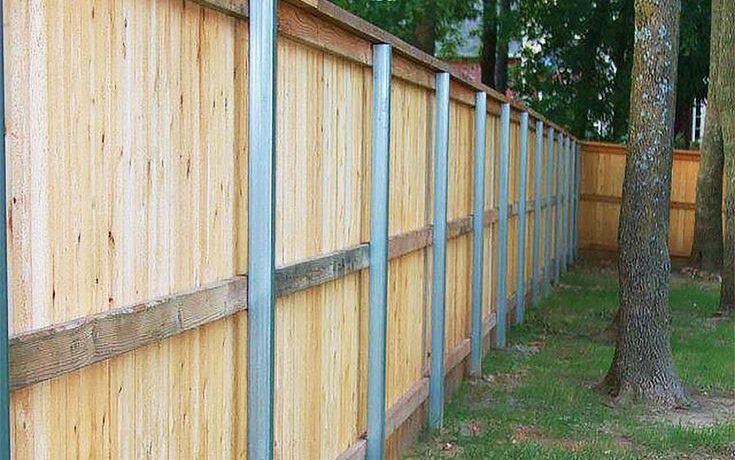Featured

As sustainability becomes a top priority for homeowners and companies alike, the need for environmentally friendly products, consisting of secure fencing products, has increased. Typical secure fencing alternatives such as vinyl, metal, and timber can have negative ecological effects, however there are currently a number of eco-conscious choices to think about. Choosing eco-friendly fencing products not just aids lower your carbon impact but also adds to a much more sustainable and all-natural atmosphere.
- Bamboo Fencing. Bamboo is just one of one of the most environment-friendly secure fencing choices readily available. Understood for its rapid growth and marginal ecological impact, bamboo is a highly renewable resource. Unlike typical woods, bamboo can be gathered in a couple of years and grows back rapidly, making it a sustainable choice for fencing. It's strong, long lasting, and immune to parasites, offering a trendy and natural choice for house owners.
Benefits: Bamboo is fast-growing, light-weight, and sustainable. It requires less pesticides and fertilizers contrasted to various other plants, making it a low-maintenance option. Considerations: While bamboo is long lasting, it may require regular maintenance to shield it from weathering and natural wear. It can likewise be prone to fracturing in chillier environments. 2. Recycled Products. Fencings made from recycled products are coming to be increasingly preferred as a green option. These fences are made from post-consumer plastic, recovered timber, and other recycled products, keeping waste out of landfills. Utilizing recycled products decreases the demand for brand-new raw resources, decreasing ecological deterioration.

Advantages: These fencings help in reducing waste and preserve all-natural resources. They are also often low-maintenance and durable. Considerations: While recycled fencings can be resilient, the aesthetics may not always match standard fencing options. However, lots of designs are now available that mimic the look of wood or stone. 3. Compound Secure fencing. Composite secure fencing is made from a mixture of recycled wood fibers and plastic, providing the appearance of timber without the environmental impact. Numerous composite fencings are made from recycled material, additional boosting their green standing. These fencings are long-lasting, call for very little maintenance, and do not need to be treated with dangerous chemicals like typical timber fencings.
Conveniences: Composite fencings are resilient, immune to rot, and call for little maintenance. They also give a comparable visual to wood without deforestation worries. Considerations: While they are low-maintenance, composite fences might be more costly than traditional wood or vinyl alternatives. The manufacturing process can likewise be energy-intensive. 4. Cedar and Redwood Fencing. Cedar and redwood are all-natural timber products that are typically taken into consideration extra eco-friendly compared to other hardwoods. These kinds of timber are normally resistant to degeneration, pests, and dampness, which decreases the demand for chemical treatments. Furthermore, these trees are expanded in lasting woodlands, ensuring that they are gathered responsibly.
Perks: Cedar and redwood are both sturdy and naturally attractive products. They use natural resistance to insects and rot, which helps minimize the need for chemical therapies. Considerations: These timbers can be much more pricey than other options. They likewise call for periodic maintenance, such as securing or discoloring, to make sure longevity. 5. Living Fences (Hedges and Shrubs) Living fences, made from hedges, hedges, or trees, are an environment-friendly option that additionally gives all-natural privacy and aesthetic allure. Plants such as privet, boxwood, bamboo, and arborvitae are typically used for creating thick, green fences. These living obstacles aid with sound reduction, boost air top quality, and give environment for regional wildlife.
Advantages: Living fences promote biodiversity, boost air top quality, and improve the aesthetic allure of your residential or commercial property. They likewise absorb co2 and add to a greener atmosphere. Factors to consider: Living fences require maintenance, such as pruning and watering, to guarantee they grow effectively. They may not supply the same level of protection as typical fencing products. 6. Rock and Reclaimed Block Fence. Rock and redeemed brick fences are an additional environmentally friendly choice. These products are resilient, call for very little maintenance, and have a long lifespan. When redeemed from old buildings or frameworks, they assist decrease the demand for new products and stop waste from entering garbage dumps.
Benefits: Stone and brick are sturdy, weather-resistant, and give a classic, traditional aesthetic. Reclaimed products likewise have a minimal ecological footprint. Factors to consider: The setup of stone and block fences can be labor-intensive, and the products might be much more pricey than various other options. The long-term sturdiness and low maintenance prices can make them a beneficial investment. Conclusion. Selecting a green secure fencing material is a clever means to decrease your ecological effect while boosting your home's privacy and aesthetic charm. Bamboo, recycled products, composite fencing, and living fencings all offer sustainable alternatives that minimize waste, save resources, and promote a greener lifestyle.
By choosing one of these environmentally friendly fence choices, you add to the security of the setting while producing a beautiful, useful outdoor area. The right material will depend upon your preferences, climate, and the level of maintenance you agree to supply, but rest assured that there are various eco-conscious options that line up with your sustainable way of life.
Latest Posts
Check Out Oil Changes & More: Full Services Guide from Montclare Auto Repair
Published May 24, 25
1 min read
Experience WyHy Federal Credit Union – Low Rates for Wyoming Residents
Published May 24, 25
1 min read
Explore Your Financial Partner at WyHy – Financial Freedom for Your Goals
Published May 22, 25
1 min read
More
Latest Posts
Check Out Oil Changes & More: Full Services Guide from Montclare Auto Repair
Published May 24, 25
1 min read
Experience WyHy Federal Credit Union – Low Rates for Wyoming Residents
Published May 24, 25
1 min read
Explore Your Financial Partner at WyHy – Financial Freedom for Your Goals
Published May 22, 25
1 min read